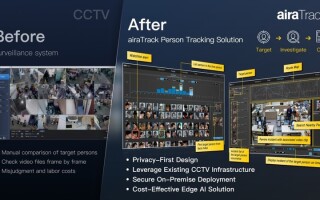Rohde & Schwarz Presents Economy Vector Signal Generator for Automotive, IoT, and Education Sectors
July 23, 2020
Blog

The new R&S SMCV100B vector signal generator targets automotive, broadcast, navigation, and wireless applications.
Rohde & Schwarz GmbH announced the R&S SMCV100B economy signal generator. According to the company, it is the first economy signal generator that covers the 5G NR extended FR1 frequency range up to 7.125 GHz, making it ideal for mobile communications applications.
The R&S SMCV100B also uses the R&S WinIQSIM2 simulation software. This software supports common cellular and wireless connectivity standards, including standards for IoT and Wi-Fi (802.11xx). In total, more than 30 standards are available, along with an arbitrary waveform generator to output user-defined signals.
In the automotive industry, the R&S SMCV100B can be used for end-of-line testing of car radios or GNSS navigation equipment. Broadcast standards can be combined with mobile communications, wireless, and navigation standards. For Go/NoGo tests, the generator can output GPS, GLONASS, Galileo, and BeiDou signals of a single navigation satellite. Predefined, time-limited I/Q sequences can be output for functional tests with fixed satellite positions.
As only one instrument is needed for a wide variety of applications, this allows the generator to be deployed at any time for other tasks on a production line. This minimizes the potential number of spare units and allows massive reduction of downtime on production lines.
FPGA based real-time coders for broadcast standards used worldwide are available. The R&S SMCV100B supports analog and digital radio standards as well as second and third generation digital terrestrial and satellite-based television standards. According to the company, this is the first economy platform that supports ATSC 3.0 in addition to the DVB-T2 and DVB-S2X standards.
The R&S SMCV100B uses an advanced direct RF concept to generate output signals for frequencies up to 2.5 GHz. This allows I/Q modulation and RF signal generation to be performed in the digital domain, virtually eliminating the I/Q imbalance errors and LO leakage commonly seen with conventional analog I/Q modulators. An analog mixing concept is used to generate frequencies above 2.5 GHz.
The Linux based platform is extensible using software options. All options are present in the device firmware and can be activated with option keys as needed. This includes frequency extension up to 6 GHz or 7.125 GHz, increasing the RF modulation bandwidth to 250 MHz, raising the RF output power to 23 dBm, and waveform streaming with up to 60 MHz (75 M symbol/s) RF bandwidth. The memory depth of the ARB generator can also be extended from 64 M samples to 1 G sample.
As a general purpose instrument, the R&S SMCV100B can be deployed in labs, in universities, and schools as well as on production lines, for example in the automotive industry.
The R&S SMCV100B vector signal generator for automotive, broadcast, navigation, and mobile communications applications is now available from Rohde & Schwarz.
For more information, visit: https://www.rohde-schwarz.com/us/home_48230.html





